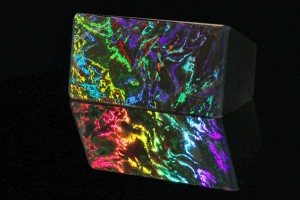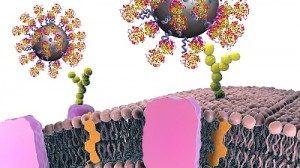This story is about carbon nanotubes and commercialization if I read Molly Ryan’s April 14, 2014 article for the Upstart Business Journal correctly,
CurTran LLC just signed its first customer contract with oilfield service Weatherford International Ltd. (NYSE: WFT) in a deal valued at more than $350 million per year.
To say the least, this is a pretty big step forward for the Houston-based nanotechnology materials company, especially since Gary Rome, CurTran’s CEO, said the entire length of the contract is valued at more than $7 billion. But when looking at the grand scheme of CurTran’s plans, this $7 billion contract is a baby step.
“We want to replace copper wire,” Rome said. “Globally, copper is used everywhere and it is a huge market. … We (have a product) that is substantially stronger than copper, and our electrical properties are in common.”
Rice University professor Richard Smalley began researching what would eventually become CurTran’s LiteWire product more than nine years ago, and CurTran officially formed in 2011.
CurTran, which is based in Houston, Texas, describes its LiteWire product this way,
Copper is a better conductor than Aluminum and Steel, and silver is too expensive to use in most applications. So LiteWire is benchmarked against the dominant conductor in the market, copper.
So how does LiteWire match up against copper wire and cable?
Electrically, in established power transmission wiring standards and frequency, LiteWire has the same properties as copper conductors. Resistivity, impedance, loading, sizing, etc, copper and LiteWire are the same at 60HZ. This was intentional by our engineering department, ease adoption of LiteWire. No need to change wire coating, cable winding, or wire processing equipment or processes, just change over to LiteWire and go. Every electrician can work with LiteWire utilizing the same tools, standards and instruments.
So what is different between Copper Wire and LiteWire?
It’s Carbon. LiteWire is an aligned structure double wall carbon nano-tube’s in wire form. It is a 99.9% carbon structure that takes advantage of the free electrons available in carbon, while limiting the ability of the carbon to form new molecules, such as COx. The outer electrons of carbon are loosely bound and easily conduced to move from atom to atom.
It is light. LiteWire is 1/5th the weight of copper conductors. A 40lb spool of 10ga 3-wire copper wire has 200 feet of wire. A 40lb spool of 10ga 3-wire LiteWire has 800 feet of wire. Aluminum wire is ½ the weight of copper, yet requires a 50% larger diameter wire for the same conductive properties, LiteWire sizing is exactly the same as copper.
It is strong. LiteWire is stronger than steel, 20 times stronger than copper, and stronger than 8000 series Aluminum cable. Span greater distances between towers, pull higher tension, reduce installation costs and maintenance.
It doesn’t creep. LiteWire expands and contracts 1/3 less than copper and its aluminum equivalents. Connection points are secure year round and year after year. Less sagging of power lines in hot temperatures, less opportunity for grounding of power lines and power outages.
More power, less loss. LiteWire is equal to copper wire at 60HA, and highly efficient at higher frequencies, voltages and amperes. More electrical energy can be transmitted with lower losses in the system. Less wasted energy in the line, means less power needs to be produced.
A longer life. LiteWire is noncorrosive in all naturally occurring environments, from deep sea to outer space. No issue with dissimilar metals at connection points. LiteWire is inert and does not degrade over time.
Can you hear me now. Litewire is the perfect signal conducting wire. LiteWire is superior at higher frequencies, losses are lower and signal clarity is greater. Networks can carry more bandwidth and signal separation is cleaner.
Never wet. LiteWire is hydrophobic by nature. Water beads up and is shed, even if the water freezes, it does so in bead form and falls away. No more powerline failures from ice buildup and breaking or shorting due to line sag.
How much does it cost. LiteWire costs the same as copper wire of equal length and size. As the price of copper continues to rise and as new LiteWire facilities come on line, the cost of LiteWire will decrease. Projecting out ten years, LiteWire will be half the cost of copper wire and cable.
Never fatigues. LiteWire has a very long fatigue life, we are still looking for it. LiteWire is not susceptible to fatigue failure. LiteWire’s bonds are at the atomic level, when that bond is broken, the failure occurs. Repeated cycles to near the breaking point do not degrade LiteWire’s integrity. Metal conductors fatigue under repeated bending, reducing their load carrying capabilities and subsequent failure.
There is a table of specific technical properties on the LiteWire product webpage.
CurTran’s CEO has big plans (from the Ryan article),
With a multibillion-dollar contract under its belt only a few years after its founding, Rome intends for CurTran to have blockbuster years for the next five years. According to the company’s website, it plans to hire 3,600 new employees around the world in this time frame.
“We also plan to open a new production facility every six months for the next five years,” Rome said. “We’ve already identified the first four locations.”
For Weatherford’s perspective on this deal, there’s the company’s April 7, 2014 news release,
Weatherford International Ltd. today [April 7, 2014] announced that it has entered into an agreement with CurTran LLC to use, sell, and distribute LiteWire, the first commercial scale production of a carbon nanotube technology in wire and cable form.
“With LiteWire products, we gain exclusivity to a revolutionary technology that will greatly add value to our business,” said Dharmesh Mehta, chief operating officer for Weatherford. “The use of LiteWire products allows us to provide safer, faster, and more economic solutions for our customers.”
In addition to using LiteWire in its global operations, Weatherford will be the exclusive distributor of this product in the oil and gas industry.
Interestingly, Weatherford seems to be in a highly transitional state. From an April 3, 2014 article by Jordan Blum for Houston Business Journal (Note: Links have been removed),
Weatherford International Ltd. (NYSE: WFT) plans to move its corporate headquarters from Switzerland to Ireland largely because of changes to Swiss corporate executive laws and potential uncertainties.
Weatherford, which has its operational headquarters in Houston, is undergoing a global downsizing as it relocates its corporate offices.
Weatherford President and CEO Bernard Duroc-Danner said the move will help the company “quickly and efficiently execute and move forward on our transformational path.”
The downsizing and move put a different complexion on Weatherford’s deal with CurTran. It seems Weatherford is taking a big gamble on its future. I’m basing that comment on the fact that there is, to my knowledge, no other deployment of a similar scope of a ‘carbon nanotube’ wire such as LightWire.
It would appear from CurTran’s Overview that LightWire’s deployment is an inevitability,
CurTran LLC was formed for one purpose. To industrialize the production of Double Wall Carbon Nanotubes in wire form to be a direct replacement for metallic conductors in wire and cable applications.
That rhetoric is worthy of a 19th century capitalist. Of course, those guys did change the world.
There’s a bit more about the company’s history and activities from the Overview page,
CurTran was formed in 2011 by industrial manufacturing, engineering and research organizations. An industrialization plan was defined, customer and industry partners engaged, the intellectual property consolidated and operations launched.
Operations are based in the following areas:
- Corporate Headquarters, located in Houston Texas
- Test Facility, located in Houston Texas and operated by NanoRidge and Rice University researchers.
- Pilot Plant located in Eastern Europe
- Production facilities are to be located in various global markets. Production facilities will be fully operational in 2014 producing in excess of 50,000 tonnes per facility annually.
CurTran manufactures the LiteWire conductor in many forms. We do not manufacture insulated products at this time. We rely on our Joint Venture Partners to deliver a completed wire/cable product to their existing customer base.
CurTran provides engineering services to Partners and Customers that seek to optimize their products to the full capabilities of LiteWire.
CurTran supports ongoing research and development activities in applied material science, chemical/mechanical/thermo/fluid production processes, industrial equipment design, and application sciences.
Getting back to Weatherford, I imagine there is celebration in Ireland although I can’t help wondering if the Swiss, in a last minute solution, might not find a way to keep Weatherford’s headquarters right where they are. I haven’t been able to find a date for Weatherford’s move to Ireland.
![[downloaded from http://pubs.acs.org/doi/full/10.1021/nn503454h]](http://www.frogheart.ca/wp-content/uploads/2014/08/GrapheneRuberbands-300x108.gif)

